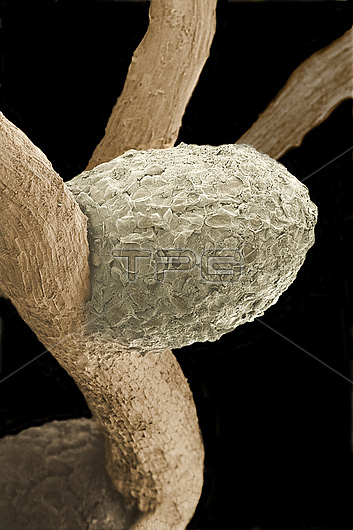
Coloured scanning electron micrograph (SEM) of nitrogen-fixing nodules on a root of clover (Trifolium repens). At centre is a small nodule (cream), with a second to bottom left. They are the plant's reaction to an infection by the soil bacterium R. leguminosarum. Inside the nodule, the bacterium is able to 'fix' atmospheric nitrogen, producing ammonium salts. This is an example of symbiosis (mutualism); the bacterium benefits from plant carbohydrates made by photosynthesis, and the plant benefits from the fixed nitrogen. Artificial fertilisers contain nitrogen as ammonium or nitrates; leguminous crops that support a variety of Rhizobium species require less applied chemical fertiliser. The amount of nitrogen fixed globally by bacteria (principally Rhizobium spp.) is about 150-200 million tonnes per year, or three times the output of the global chemical fertiliser industry. Magnification: x25 at 10x8.
| px | px | dpi | = | cm | x | cm | = | MB |
Details
Creative#:
TOP26437439
Source:
達志影像
Authorization Type:
RM
Release Information:
須由TPG 完整授權
Model Release:
N/A
Property Release:
N/A
Right to Privacy:
No
Same folder images:

 Loading
Loading